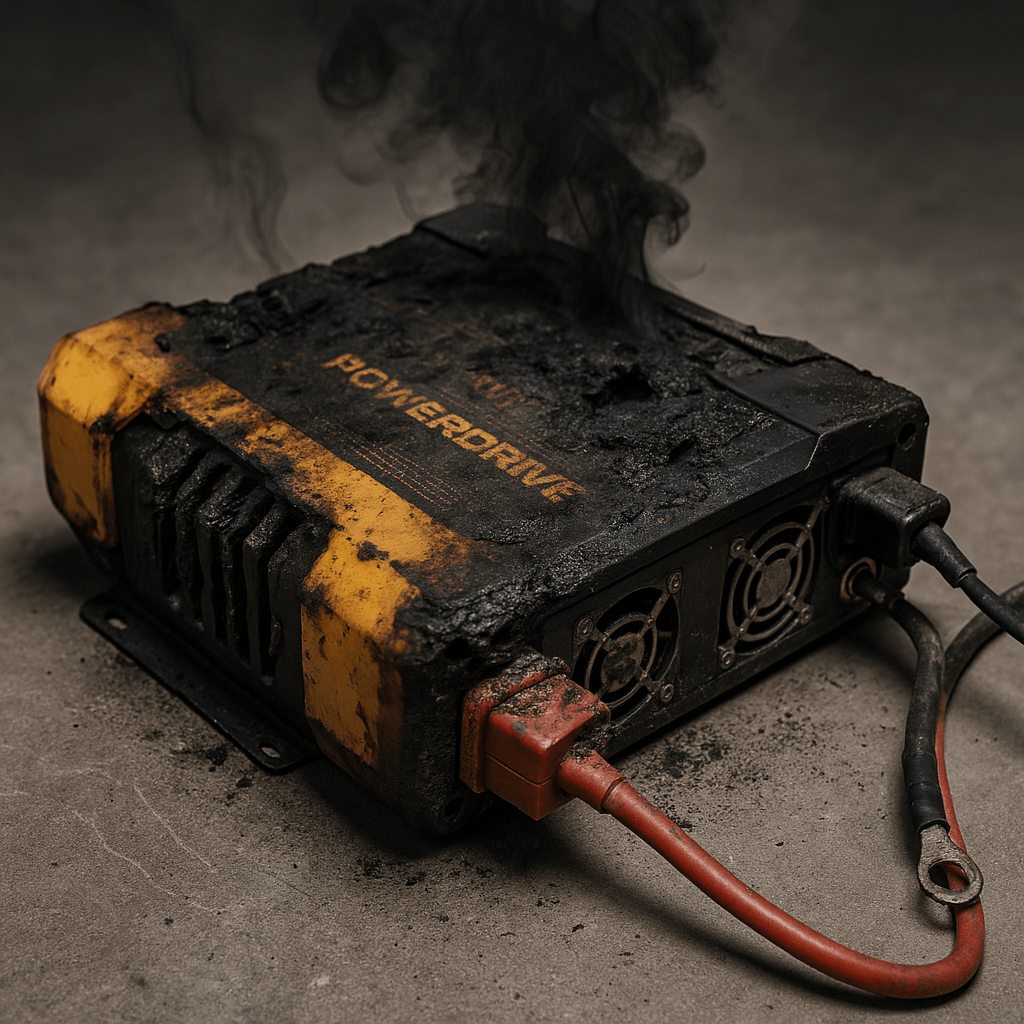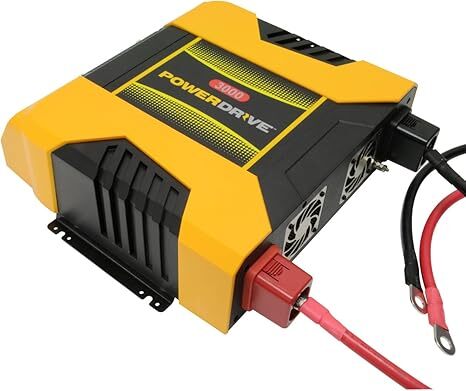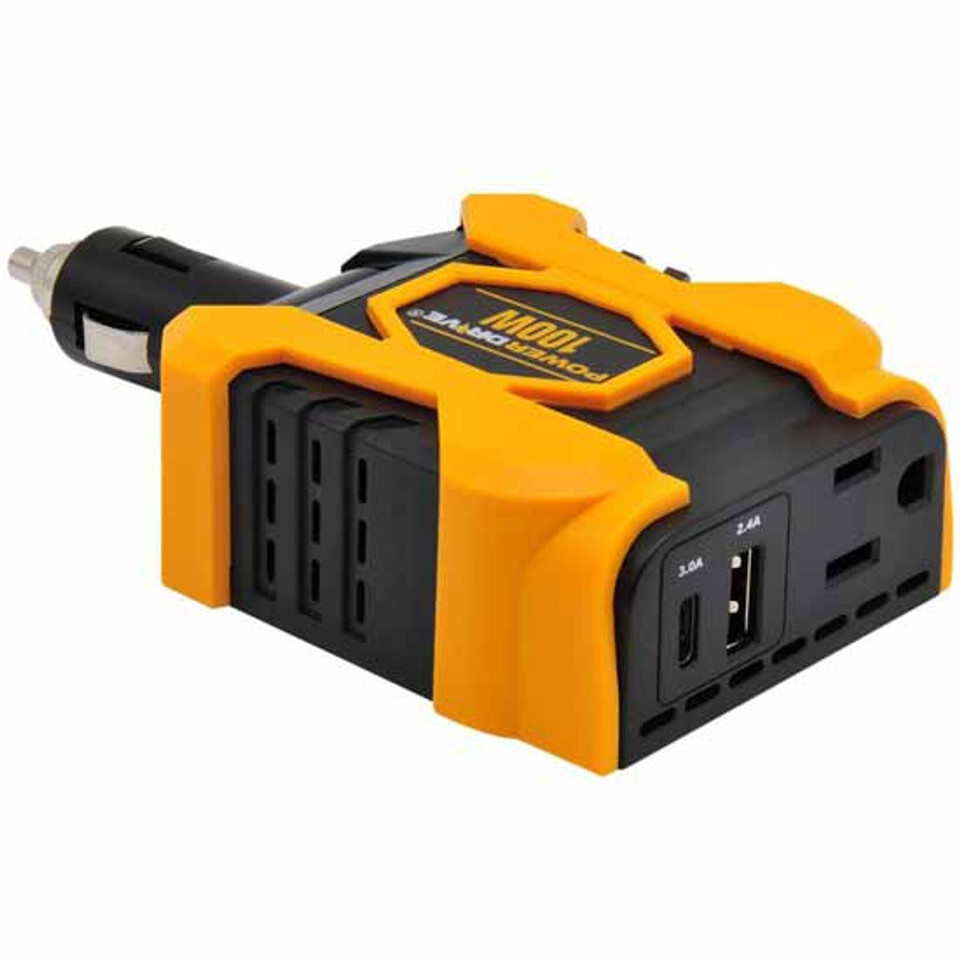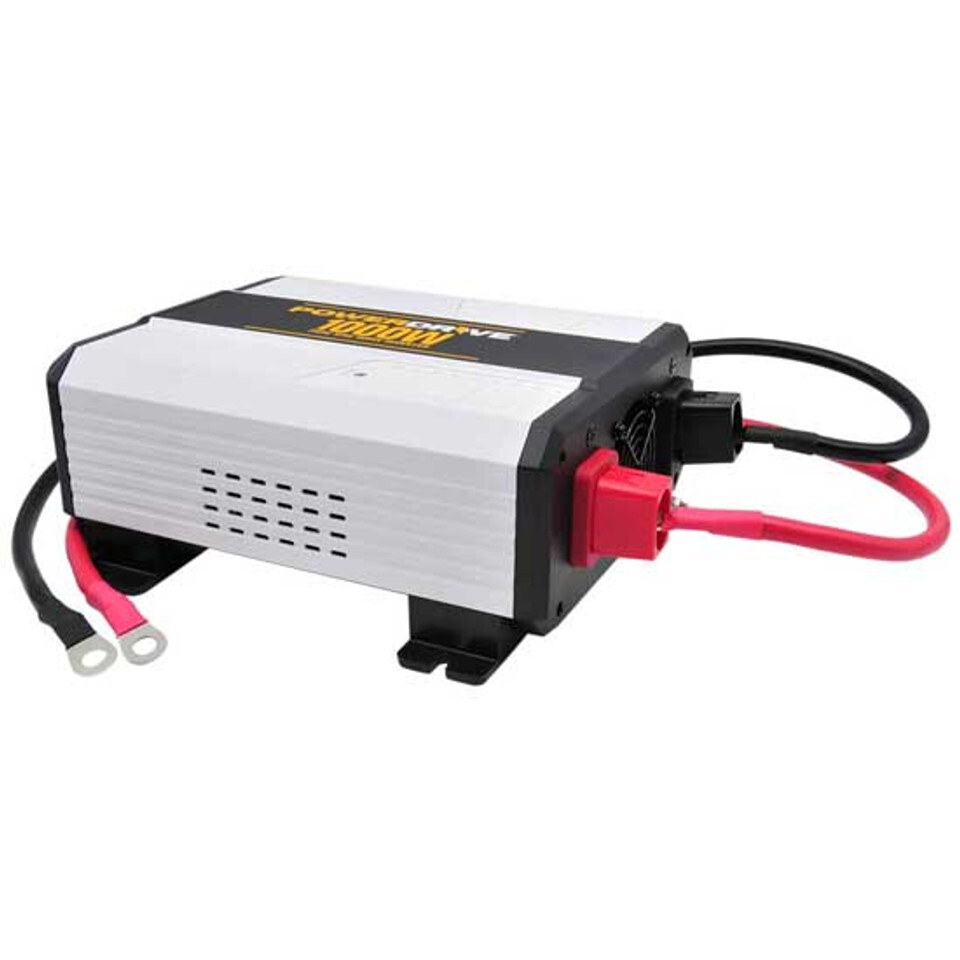Top 4 Semi Truck Power Inverters to Fully Charge Your Appliances
Semi truck power inverters are critical for truckers who need more comfort, productivity, safety, and convenience on long-haul truck drives.
Here are the best aftermarket inverters to consider.
#1. 12V 3000 Watt Portable Power Inverter With High Surge Capacity
- Power Output: 3000 watts continuous, with a high surge capacity.
- Features: Equipped with four 3-prong AC outlets and two USB ports, allowing multiple devices to be powered simultaneously.
- Design: Portable and designed for durability, making it suitable for the demanding environment of a semi-truck.
- Ideal For: Drivers needing to operate several high-wattage appliances or tools concurrently.
#2. 2500-5000 Watt AC-DC Power Inverter With 3 Plugs
Top Features of the Cobra 2500-5000 Watt AC-DC Power Inverter:
- Power Output: 2500 watts continuous, peaking at 5000 watts.
- Features: Includes three AC outlets, a 5-watt USB port, power indicator, and alarm system to alert users of potential issues.
- Safety: Built-in protections against over-voltage, under-voltage, and thermal overload.
- Ideal For: Operators requiring a robust inverter for heavy-duty applications with multiple devices.
#3. 12V 100 Watt Portable Direct Power Inverter
The key features of PowerDrive Portable Inverter with Dual Ports:
- Power Output: 100 watts continuous.
- Features: Includes dual ports for charging small devices such as smartphones, tablets, or GPS units.
- Design: Ultra-portable and easy to use, ideal for quick charging needs.
- Ideal For: Drivers needing a simple solution for keeping personal electronics charged during trips.
#4. Power Drive 1000 Watt Wave Power Inverter
The key features of this PowerDrive 1000 Watt Inverter:
- Power Output: 1000 watts continuous.
- Features: Designed to provide reliable power for essential devices and smaller appliances.
- Design: Compact and efficient, making it suitable for limited cabin spaces.
- Ideal For: Drivers looking to power basic electronics without the need for high wattage.
What to Consider Before Buying a Power Inverter
- Power Requirements: Assess the total wattage of devices you plan to use to ensure the inverter can handle the load.
- Surge Capacity: Some appliances require a higher startup wattage; ensure the inverter can accommodate these surges.
- Number of Outlets: Consider how many devices you'll need to plug in simultaneously.
- Safety Features: Look for inverters with protections against over-voltage, under-voltage, overloads, and thermal issues.
- Installation: Ensure the inverter's size and design fit within your truck's cabin and can be securely installed.
Selecting the right power inverter enhances your on-the-road experience by providing reliable energy for your essential devices, contributing to comfort and efficiency during long hauls.
Key Features and Specs to Understand
Wattage (continuous vs surge)
- Continuous: the amount of power that can be delivered without stopping
- Surge: handles short-term spikes, like when a microwave first turns on
Number of Outlets
- Determines how many devices you can power at once (some offer AC + USB options)
Pure vs. Modified Sine Wave
- Pure sine is better for sensitive devices (laptops, CPAP machines).
Safety Protections
- Good inverts often have over-voltage, low voltage shutdown, thermal protection, and short circuit protection
Installation Type
- Portland plug-and-play vs hardwired permanent installs.
How Much Power Does Your Inverter Need?
Let’s use a real-world example.
You have:
- A small microwave (1000W)
- A mini fridge (200W)
- A laptop (100W)
- Watch TV (150W)
You’ll need a 1500-2000W inverter with multiple outlets and a solid surge capacity to handle all those devices reliably - ideally a pure sine wave model if you’re running sensitive electronics.
Safety Precautions for Your Power Inverter
- Most drivers use inverters when the engine is running
- Some fleets set inverter wattage limits to avoid using it in excess
- Others install low voltage cut-off devices to prevent battery depletion
Why Do Power Inverters Go Bad?

Overheating
Cause: Inverters generate heat, especially under heavy load. Poor ventilation, high ambient temps, or a dusty install location can cause overheating.
Result: The inverter may shut down automatically to prevent damage, or it may suffer long-term heat damage and degrade internally.
Blown Internal Fuses
Cause: A sudden power surge, short circuit, or faulty wiring can cause a blown fuse inside the inverter or damage to capacitors and transistors.
Result: Inverter stops producing AC power or powers on but doesn't deliver current to outlets.
Battery Drain or Low Voltage Input
Cause: If the truck's battery is weak or the inverter is used extensively with the engine off, voltage can drop below safe levels.
Result: Inverter shuts off automatically (a safety feature), or repeated undervoltage can damage internal components.
Improper Grounding or Installation
Cause: Incorrect wiring, bad ground connections, or loose terminals can lead to intermittent issues, electrical noise, or even dangerous shorts.
Result: Flickering power, poor performance, or total inverter failure.
Using the Wrong Size Inverter
Cause: Running high-wattage devices on an inverter that’s undersized can cause overload conditions.
Result: The inverter might shut down frequently, overheat, or wear out faster.
Moisture and Corrosion
Cause: Semi-trucks deal with humidity, spills, and condensation. If the inverter isn't mounted in a dry location, moisture can cause corrosion or short circuits.
Result: Intermittent performance or permanent failure.
Age and Component Wear-and-Tear
Cause: After years of use, internal components like capacitors and transistors wear down from heat cycling and constant power draw.
Result: Reduced efficiency, erratic behavior, or total failure over time.
Our inverter products come with a warranty.
Signs Your Inverter Is Going Bad
- It randomly shuts off under normal loads.
- The fan runs constantly or makes strange noises.
- Burnt smell or visible scorching near the ports or wires.
- USB ports or outlets stop working.
- It powers on, but your devices don’t charge or run properly.
- Frequent “overload” or “low voltage” warnings, even with proper input.
It’s often better to replace your inverter than repair it, since repairs can cost more. If you’re looking to hook up more devices, it’s better to upgrade to a higher wattage or pure sine wave.
Tips on Preventing Inverter Failure
- Size it correctly – Choose an inverter rated for more than your highest expected load.
- Mount it properly – Ensure good airflow, secure mounting, and clean dry conditions.
- Use pure sine wave for sensitive electronics – They’re more long-term reliable.
- Check wiring regularly – Loose or corroded terminals are common issues.
- Add fuses or circuit breakers – Protect the unit and your truck’s electrical system.
- Don’t run it constantly off the battery with the engine off – Avoid deep draining your truck batteries.
Shop for Aftermarket Electronics Accessories and Inverters
If you’re looking for great aftermarket accessories and power inverters, take a look at our product lineup.
Recent Posts
-
3 Epic Air Cleaner Light Panels for Your Kenworth W900 Truck
When it comes to customizing a Kenworth W900, some truckers love adding as many addtional light …14th Apr 2025 -
5 Killer Axle Cover Styles to Personalize Your Semi Truck
Semi truck axle covers protect the exposed axle housing from dirt and road debris while offerin …14th Apr 2025 -
5 Unique Lug Nut Cover Styles to Give Your Truck a More Polished Look
Semi truck lug nut covers aren’t just useful in protecting your lug nut and wheel studs, …14th Apr 2025 -
Top Semi Trucks Owned in Each State (Data for All 50 States)
Here's some visual data on the most commonly owned heavy duty semi truck models based upon four top …26th Mar 2025 -
Best Sleeper Cab Upgrades for Comfortable Long-Haul Trucking
A comfortable sleeper cabin space can improve your rest, well-being, and productivity on the road. I …14th Mar 2025 -
How to Customize Your Peterbilt 379 with Aftermarket Parts (Within a Budget)
The Peterbilt 379 truck is an iconic, bold, and rugged-looking classic, beloved among owner-operator …13th Mar 2025 -
Peterbilt 379 Short Hoods vs Long Hoods
Your Peterbilt 379 hood is more than metal—it’s a statement. If you’re comparing p …12th Mar 2025 -
Are Semi Truck Grille Guards Worth the Money?
Ever seen another truck driver barreling down the highway with a 14-gauge stainless steel or chrome …7th Mar 2025 -
What are the Best West Coast Mirror Styles for Semi Trucks?
The West Coast mirror has been a staple of commercial trucks since trucking started. Constructed for …6th Mar 2025















